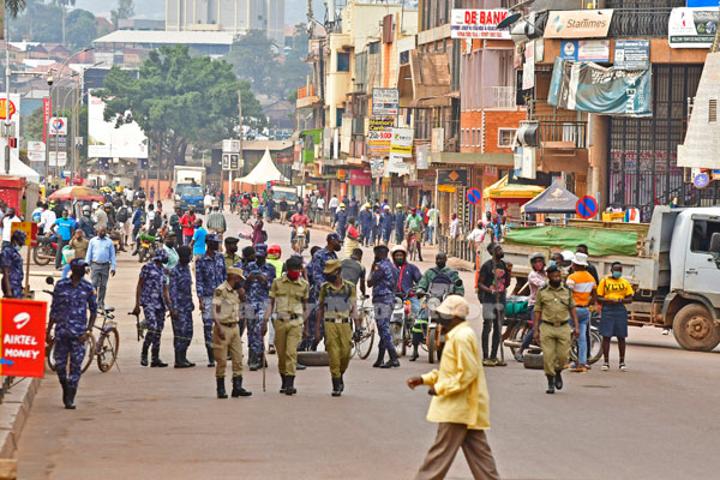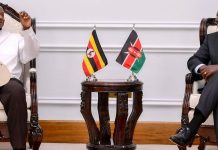By Faridah N Kulumba
Africa-Press-Uganda The Republic of Uganda is one of the smallest East African countries by size compared to bordering countries like Kenya, Tanzania, and the Democratic Republic of Congo. Uganda is home to 45 million persons which means Uganda’s population is less than Kenya by only 10 million persons. The rate at which the population is growing in Uganda in recent years contributes much to the economic challenges facing the country, hence affecting development.
State of the nation
According to Human Development Index (HDI) data for 2019, by the United Nations, Uganda’s value is 0.544, ranking at 158 out of 189. which puts the country in the low development category. In Uganda, per capita income is 800 USD, which is extremely low by global standards. The cost of living is well below the global average, indicating massive socio-economic problems.
Poverty
Although Uganda has been experiencing consistent economic growth in recent years, economic growth has not always led to poverty reduction. The issue of poverty is attributed to many things such as unemployment, corruption, income inequality, and others. for the last two years, poverty is so much attributed to the Covid-19 pandemic.
Covid-19
The Covid-19 pandemic has driven 4 percent of Ugandans back into poverty, posing the toughest challenge ever for the country’s budgeting process. The year 2021 ended with 25 percent of Ugandans that is a quarter of the population going back to living below the poverty line an increase to 21 percent at the beginning of 2020, according to the 2021/2022 national budget which was launched by the government of Uganda last year. Before Covid-19 economic growth for 2020, was forecast at 6.7 percent, but has since been revised downward to 3.1 percent.
Unemployment
The employment challenge in Uganda is attributed to the rapid population. Each year, 700, 000 Ugandans reach working age. But as a recent World Bank report shows, there are only jobs for 75,000 of them. Youth unemployment remains a major political and socio-economic challenge in Uganda despite the consistent economic growth in recent years.
Income inequality
During the past two decades, Uganda witnessed a remarkable increase in income inequality. The Gini coefficient increased from about 0.32 in 1990 to 0.48 in 2012. The increase in income inequality stood in total contrast to the high rates of GDP growth, which averaged about 7,5 percent per annum over the past two decades. Macroeconomic stability coupled with liberalization and market-based economics were promoted as the right policies that would make Uganda realize the desired high rates of GDP growth. The role of the state in the economy was rolled back through privatization. In line with the Millennium Development Goals (MDGs) paradigm, Uganda’s public sector spending ( and especially support from the country’s development partners) targeted the social sectors.
Allocation of resources
Another major challenge facing the government of Uganda is the low absorption capacity of allocations and slow implementation of government projects and the duplication of roles by the multiple- government agencies which leads to over-allocation of resources.
Corruption
Corruption is in every government sector in Uganda. The Transparency International report on corruption challenges in Uganda showed that the country increased to 142 in 2020 from 137 in 2019. This rank is based on how corrupt Uganda’s public sector is perceived to be. There are many factors that contribute to this challenge such as economic hardship, lack of assertiveness, weak and ineffective judicial system, lack of visible corruptible role models, nepotism, and many more. The Global integrity’s 2006 report on the country estimates that more than half the government’s annual budget is lost to corruption each year, amounting to 950 USD million. Public procurement is one of the sectors most affected by corruption in Uganda.
According to the 2007 African Peer Review Mechanism report, Uganda loses 258.6 USD million annually through corruption and procurement malfeasances.
Agriculture
The agricultural sector is the backbone of Uganda. According to the United Nations Food and Agriculture Organization, Uganda’s fertile agricultural land has the potential to feed 300 million people. Eighty percent of Ugandan’s land is available but only 35 percent is being cultivated. In the fiscal year 2020/2021. agriculture accounted for about 23.7 percent of GDP, and 31 percent of export earnings. Uganda produces a wide range of agricultural products including coffee, tea, sugar, livestock, fish, edible oils, cotton, tobacco, plantains, corn, beans, cassava, sweet potatoes, cassava, millet, sorghum, and groundnuts. Commercialization of the sector is impeded by farmers’ limited use of fertilizer and quality seeds, and a lack of irrigation infrastructure – rendering production vulnerable to climatic extremes and pest infestations. An estimated 41% of Uganda’s land is degraded, according to the report, contributing to economic vulnerabilities and poverty. The rate of degradation and soil erosion is unsustainable and costs about 17% of the country’s gross domestic product (GDP)
Ethnicity
One of the post-independence concerns in Uganda today is that ethnic has been detrimental to national unity, democracy, and development. The ethnicity challenge is attributed to the conflicts in Uganda from 1964 to 1966 when Obote overthrew Mutesa II. The 1971 coup by Id Amin, the civil war in 198-86, and the insurgency in North since 1987 have had ethnicity as one of the driving factors. The ethnicity challenge is linked to political and economic conditions that are, the unequal distribution of and competition for power and wealth, and has led to a huge gap between the rich from one group of people and the poor from other groups. Uganda is more divided today than in the 1980s.
Conflicts with neighbouring countries
Uganda has lost billions and billions of money in recent years while having conflicts with neighboring countries which has resulted in the closure of borders due to political issues. From February 2019 to 2022 the Katuna border between Rwanda and Uganda has been closed due to some unknown issues, and in March last year, Kenya suspended any exports of maize into Kenya from Uganda, claiming that the test results for maize imported from Uganda and Tanzania revealed high levels of mycotoxins that are consistently beyond safety limits.






